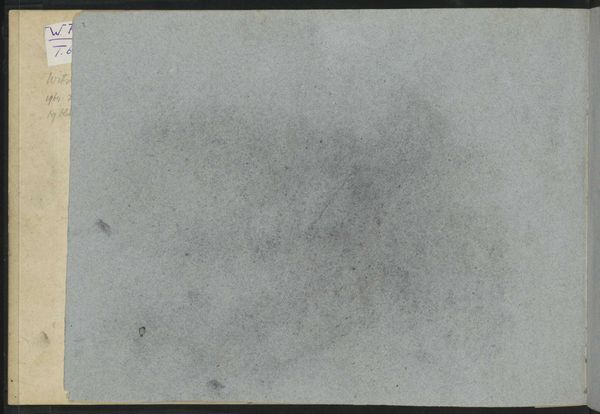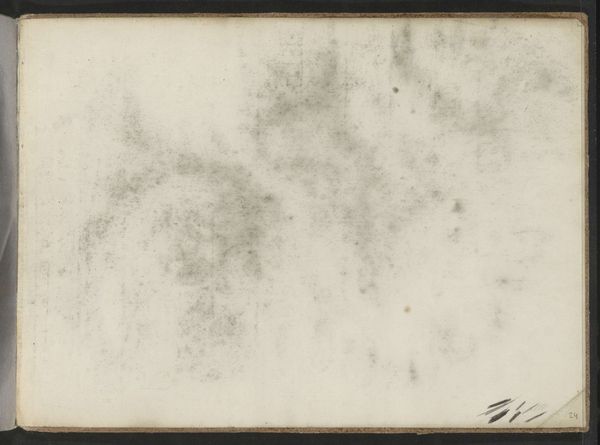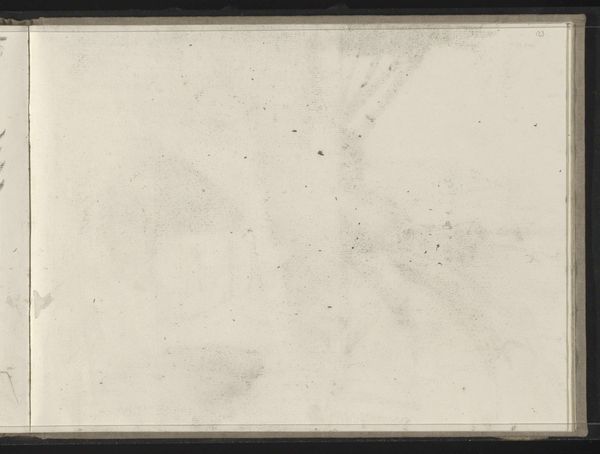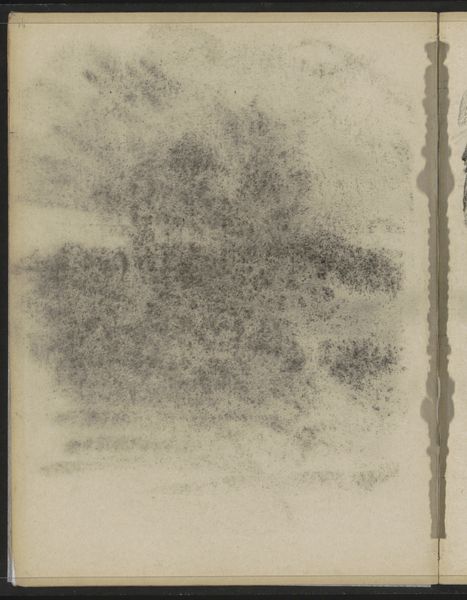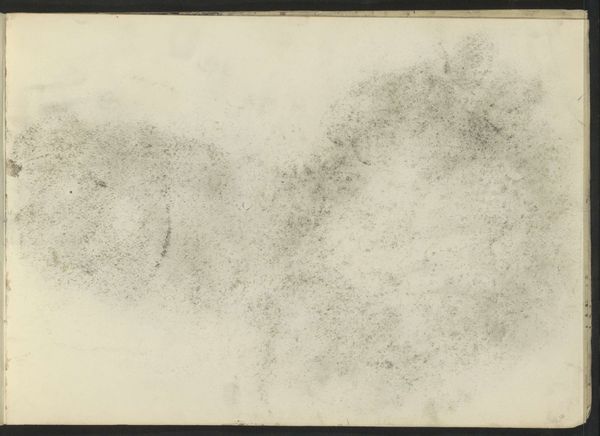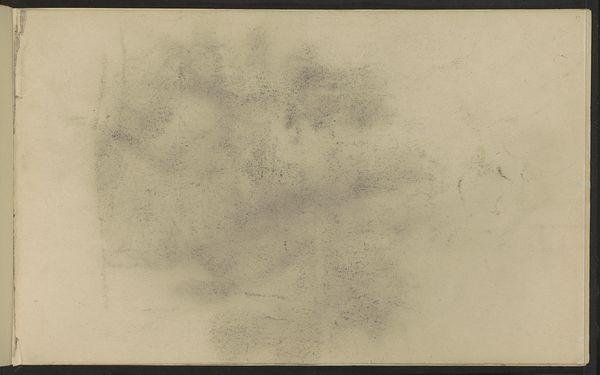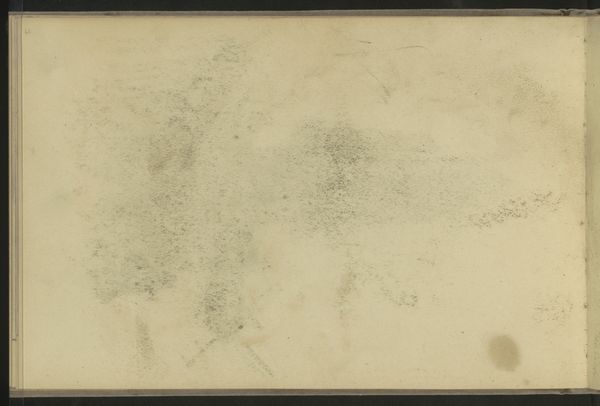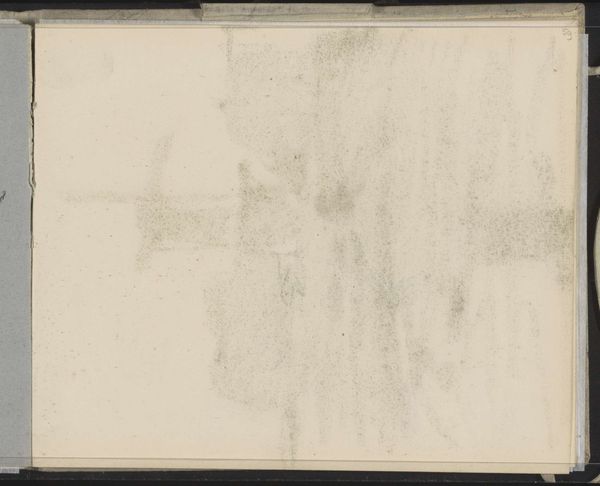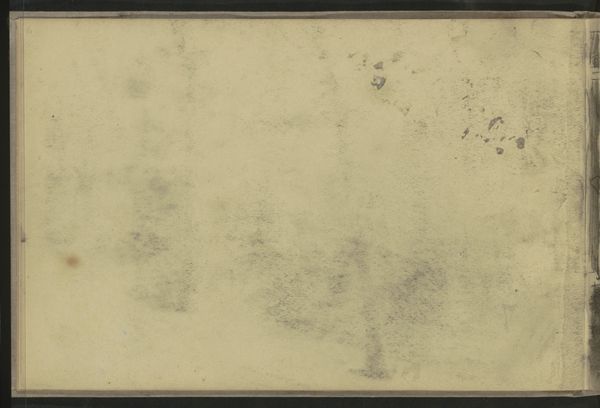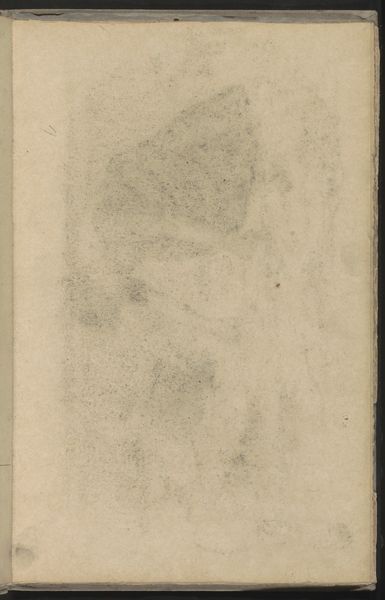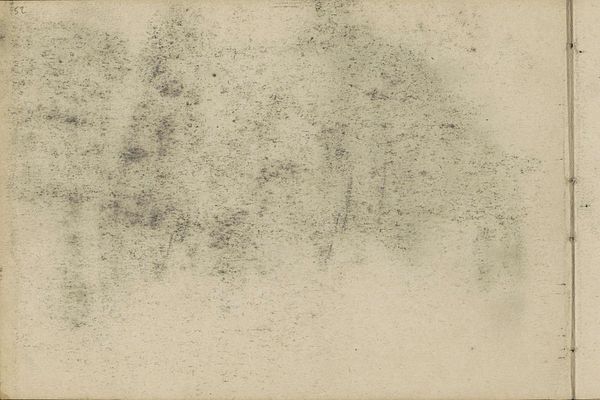
Copyright: Rijks Museum: Open Domain
Curator: Before us is "Studie," a drawing crafted by Carel Adolph Lion Cachet around 1897-1898. The Rijksmuseum holds this example of abstraction made with graphite and pencil. Editor: Right. My first impression? It's a wisp of a thing. Something fleeting caught on paper. A forgotten scribble, almost, but with a curious weight. Curator: Indeed. Notice how Cachet deploys the graphite. The strategic blurring evokes a sense of depth within the ostensibly flat plane of the paper. Semiotically, we can decode the play of light and shadow as indicative of absence. Editor: Or, you know, maybe it's just a really satisfying smudge! Seriously, though, I feel like I could reach out and touch it. It reminds me of wiping condensation off a window, watching the world bloom back into focus. Is it non-objective art as they say? Perhaps it's Lion Cachet catching feeling, before words got in the way. Curator: Feeling is crucial. The composition—the mass against the untouched page—creates tension. Note also the lines of the original sketch book—the subtle way the medium almost breaks away from its confinement. There's a kind of structured resistance. Editor: I like that "structured resistance." I bet Lion Cachet made this, maybe tossed it aside, then saw something shimmering within the smudge. Like a song stuck in your head, that you simply have to keep playing, till you get it right. It's that kind of relentless and raw feeling it stirs. Curator: I concur. In scrutinizing this work through its intrinsic formal qualities, we are forced to contemplate the non-representational nature of art, the raw essence of artistic practice. Editor: Well put! Me? I am walking away feeling like Lion Cachet reminded me that unfinished symphonies and fleeting feelings are artworks on their own terms. A very pleasant encounter.
Comments
No comments
Be the first to comment and join the conversation on the ultimate creative platform.
